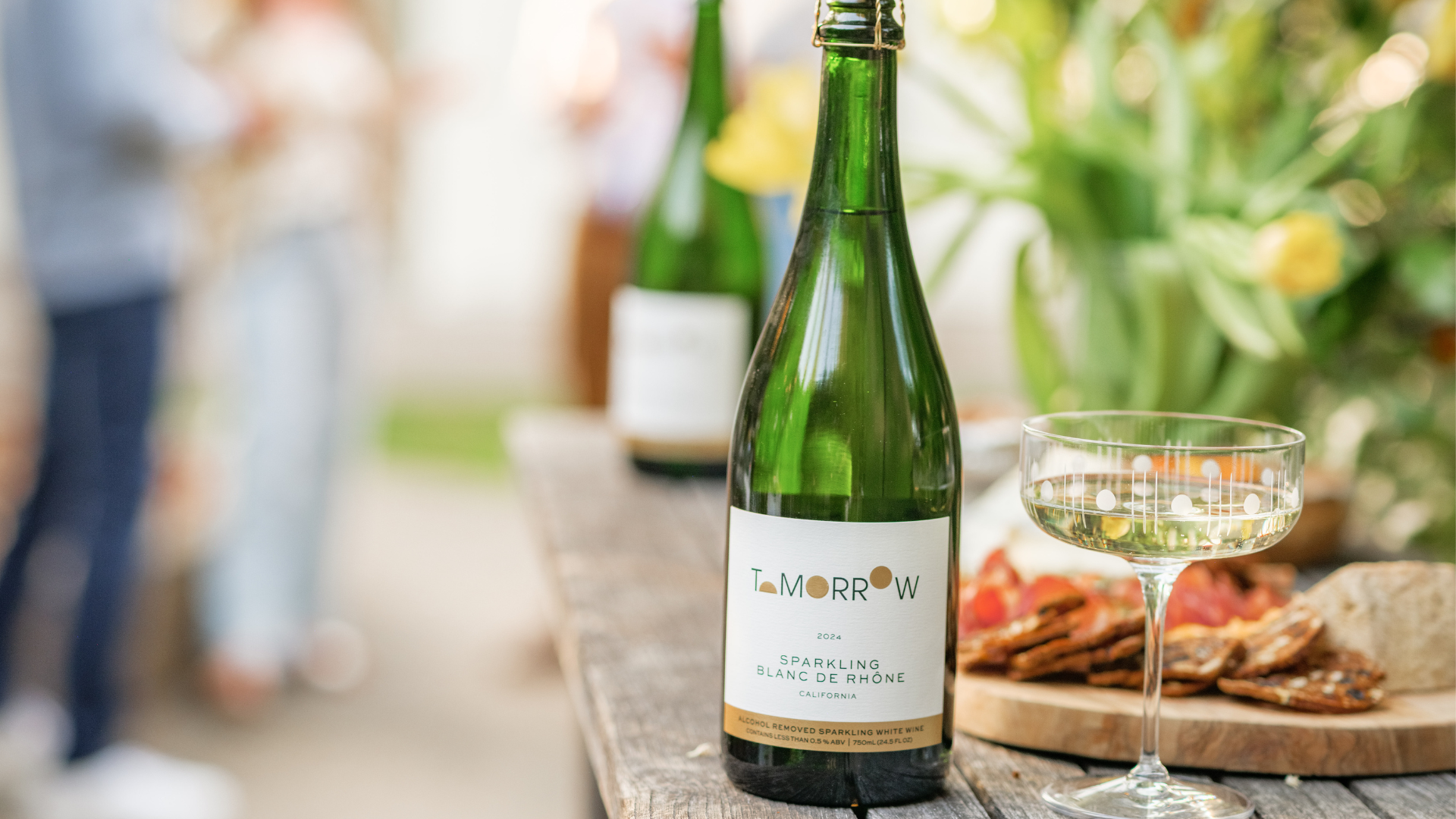
How to Pair Food and Non-Alcoholic Wine
Pairing wine with food is about balance—bringing flavors, textures, and sensations into harmony. The right pairing enhances both what’s in the glass and what’s on the plate.
At Tomorrow Cellars, our wines are designed to be food-friendly, crafted with balance, acidity, and structure in mind so they shine alongside a meal.
There are a few foundational principles that govern food and wine pairing. These principles don’t disappear when the alcohol does—but they can be applied differently. Because non-alcoholic wines have different weights and acidities than their traditional counterparts, there are new possibilities and ways wines can be paired.
Understanding the Basics of Pairing Non-Alcoholic Wine
Pairing non-alcoholic wine follows the same rules as traditional wine pairing—match intensity, balance acidity, and use texture to your advantage—but the structure of NA wine means those rules play out differently.
Let’s explore how to pair food with non-alcoholic wines and make every meal shine.
Body and Balance
Weight is a key consideration in pairing. A wine and a dish should match in weight and intensity. A heavy Cabernet Sauvignon will overwhelm a light fish dish, and a Sauvignon Blanc will be drowned out by a heavy steak.
Alcohol is what creates much of the weight in wines. Without it, non-alcoholic wines feel lighter and more transparent, which means they shine with foods that are delicate, nuanced, or high in freshness.
How to Pair:
- Pair with lighter-textured foods—grilled fish, grain bowls, roasted vegetables, and salads with olive oil and herbs.
- When serving with richer dishes (short rib, cream sauces), look for added fat or umami in the food (olive oil, nuts, mushrooms, butter) to give the pairing a sense of roundness.
- Think of NA wines as more akin to European table wines—fresh, bright, and food-driven—rather than intense, sipping reds or whites.
Acidity Takes Center Stage
Acidity in wine acts like a squeeze of lemon—it cuts through fat, refreshes the palate, and balances richness. Because alcohol smooths acidity, dealcoholized wines often taste more tart or bright.
How to Use That to Your Advantage:
- Let acidity cut through richness—fried foods, cheeses, creamy pastas, buttery seafood.
- Avoid pairing NA wines with very acidic foods (lemon vinaigrettes, tomato salads) unless there’s fat to balance them—it can feel overly sharp.
- If a wine leans zippy (like our Rhône Blanc), contrast it with creamy or nutty textures to create harmony.
All About Salt
With traditional wine, salty foods are used to soften bitterness and accentuate fruit flavors. Non-alcoholic wines don’t need as much of this softening. Instead, salty, umami-rich foods amplify depth and add roundness to the pairing.
How to think about Salty Foods and NA Wines:
- Great pairings: anchovies, aged cheeses, roasted nuts, mushrooms, soy, miso, or cured meats (even plant-based ones).
- Sparkling NA wines shine with salty or fried snacks, because bubbles + salt = instant complexity.
Sweetness and Spice
In traditional wines, sweetness helps cool heat and balance spice—a sweet Riesling, for example, softens Thai or Indian spice, while dry, high-alcohol wines can make spice feel even hotter.
Without alcohol, sweetness and spice behave more predictably, which means non-alcoholic wines can often handle spicy or aromatic cuisines better.
How to Pair:
- Lightly off-dry or fruit-forward NA wines complement spicy foods without amplifying heat.
- Try pairing Red Blends with smoky or aromatic dishes like BBQ, mole, or roasted peppers.
- For wines with bright fruit or floral notes, look to contrast spice with cooling elements—yogurt sauces, coconut milk, or herbs.
Applying the Principles with Tomorrow Cellars Wines
Rhône Blanc
Crisp, foral, Mineral
Pairs beautifully with:
- Goat cheese crostini with lemon zest and herbs
- Grilled halibut with olive tapenade
- Macadamia nuts and green grapes (our favorite easy pairing)
Why it works: The bright acidity and floral notes lift creamy or salty foods, balancing richness while emphasizing freshness.
Sparkling Blanc de Rhône
Zesty, Bubbly, Elegant
Pairs beautifully with:
- Pomegranate and brie bites
- Fried chicken or truffle fries
- Sushi or tempura
Why it works: The fine bubbles and citrus backbone cleanse the palate between bites. It’s a natural fit for celebrations—or any weeknight that deserves one.
Red Blend
Layered, Silky, Cocoa-tinged
Pairs beautifully with:
- Roasted salmon with miso glaze
- Charcuterie with cheddar and olives
- Mushroom risotto or lentil stew
Why it works: Gentle tannins meet earthy, umami-rich dishes head-on. The wine’s depth and subtle oak texture create a luxurious, balanced pairing that doesn’t need alcohol to feel indulgent.
The Takeaway
Pairing non-alcoholic wine is about more than substituting one glass for another—it’s about understanding structure, texture, and balance in new ways.
By thinking in terms of acidity, salt, and body, you can create pairings that feel intentional, exciting, and delicious—no alcohol required.
Frequently Asked Questions About Pairing Non-Alcoholic Wine
What foods pair best with non-alcoholic red wine?
Non-alcoholic red wines pair beautifully with savory, umami-rich foods. Try roasted mushrooms, grilled salmon, lentil stew, or aged cheddar. Look for dishes with texture and depth—fat and salt help balance the wine’s lighter body and gentle tannins.
Does non-alcoholic wine pair differently than traditional wine?
Slightly. Alcohol adds weight and softens acidity, so when it’s removed, acidity and texture become more important. This means NA wines often shine with lighter, fresher foods and can handle spice or salt especially well.
What's the best non-alcoholic wine pairing with food?
Look for balanced, food-driven NA wines made from real grapes and crafted like traditional wine—those with crisp acidity and layered flavor. Tomorrow Cellars, for example, focuses on structure and balance, making its wines easy to pair across a range of dishes.